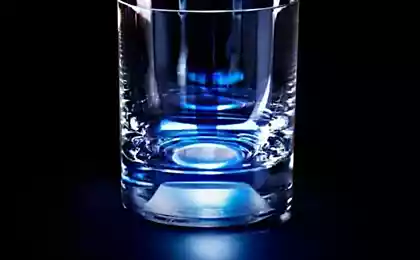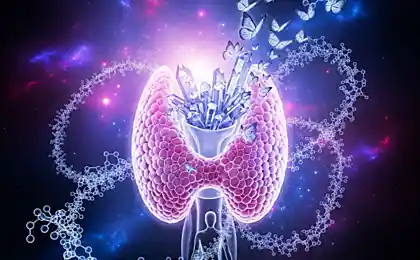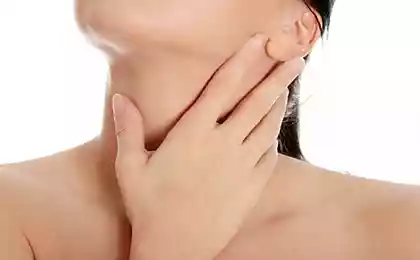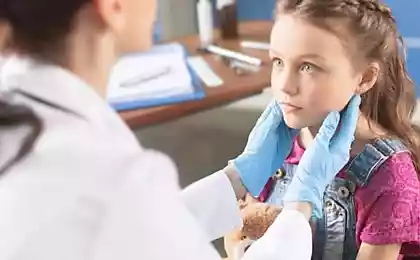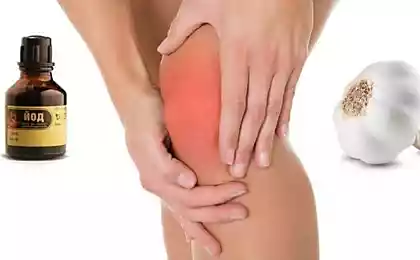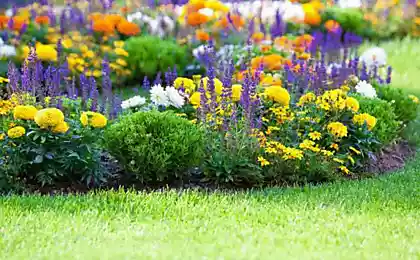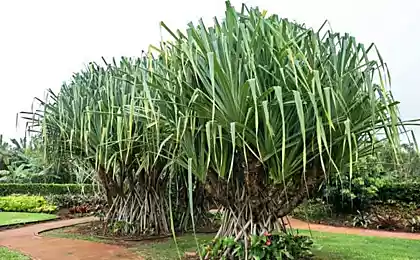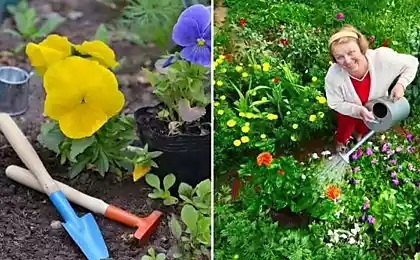224
Careful tips for summer residents
It turns out that iodine saves not only broken knees, but also the crop from pests! It is able to rid plants of phytophthorosis and powdery dew, protect from root and fruit rot, feed the seedlings and increase the yield ...
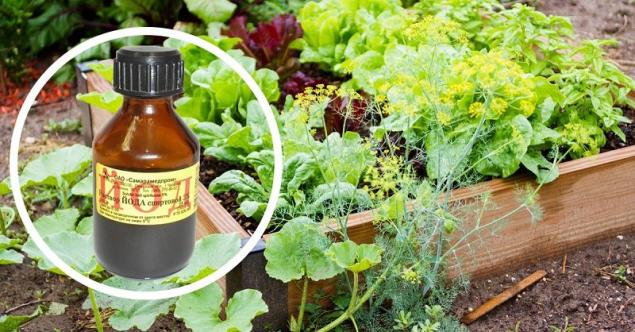
"Site" will tell you about the benefits of iodine for plants and the most popular folk methods of its use in the country.
Iodine for plants plays an important role in the life of plants, the normal course of their physiological processes. It takes part in the synthesis of individual amino acids and proteins (part of their composition), is a natural antiseptic, participates in breathing, photosynthesis and nitrogen metabolism.

DepositPhotos
This trace element is active against most fungi, viruses and bacteria - especially effective in the fight against phytofluorosis, various rots and powdery dew. And iodine is necessary for plants for normal development, budding and tying of fruits.
Lack of iodine in plants can lead to a decrease in their resistance to various diseases. The cause of iodine deficiency can be an insufficient content of this element in the soil (especially peat and podzolic soils, light supses, as well as substrates with a deficiency of organic matter).
Unfavorable for iodine too acidic soils - in them iodine instantly goes to the lower layers, becoming inaccessible to plants. Most natural iodine in chernozem fertile soils, in lowlands and especially in coastal areas.

DepositPhotos
Visually determine the lack of this trace element in plants is quite difficult, since the signs of its lack are quite conditional, and some coincide with signs of various diseases, pests, freezing plants.
Therefore, we recommend doing at least preventive feeding of plants with iodine - at least it will be useful in any suburban area and certainly will not harm plants.
Watering seedlings with iodine helps it rise faster and friendlier, and also accelerates growth. In the early stages of development, the use of this trace element is the key to the formation of high resistance to adverse environmental factors and various diseases.
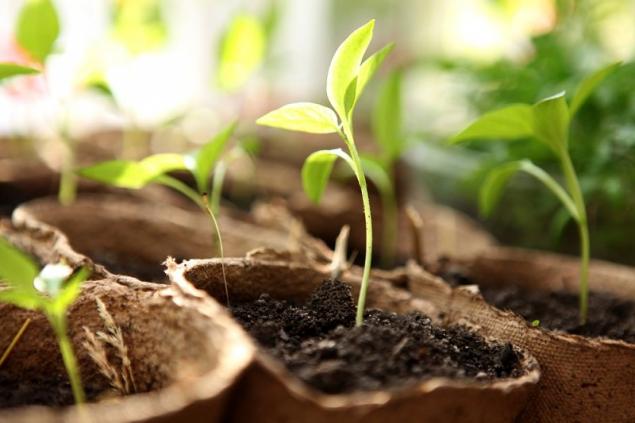
DepositPhotos Feeding with iodine solution is shown for seedlings of tomatoes, peppers, cucumbers, eggplant, cabbage. To create a working solution, dilute 1 drop of iodine in 3 liters of water. Thoroughly mix and water the seedlings under the root. To enrich seedlings with iodine, such a single watering will be enough.
Alcoholic iodine solution even in such a low concentration is able to burn a plant, especially young. Therefore, with all manipulations with iodine preparations, carefully monitor that the solution does not fall on the stems and leaves. If this is spraying, carefully follow the dosage.
Iodine against phytophthorosis A dangerous disease of nightshade cultures is phytophthorosis. The fungus that causes the disease gets onto plants from soil, weeds and tools for processing.
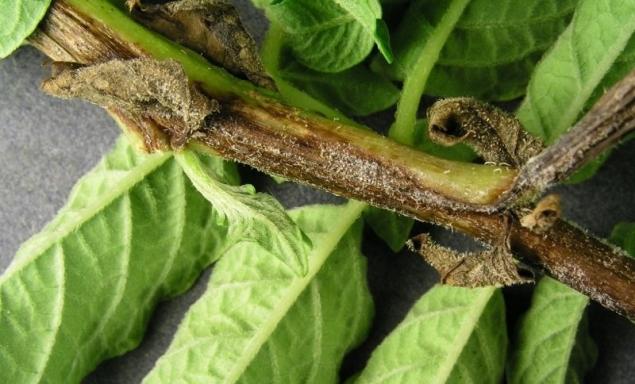
Tomatoes and potatoes are especially common in cool, damp weather. Do not save from phytophthora and shelter for plants. Not only are the leaves of the nightshade affected, but also the fruits and root vegetables.
The first sign of the manifestation of phytophthora on tomatoes are brown spots on the leaves of plants on the reverse side. Gradually, the leaf plate can yellow and dry under the influence of the pathogen. To protect tomatoes from phytophthora, you can use an iodine solution.
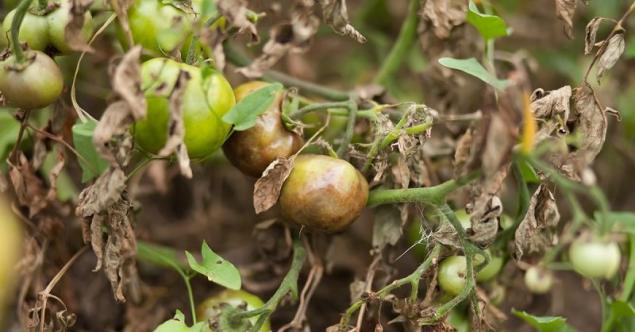
DepositPhotos
About three weeks after the appearance of shoots, gently spray young plants with a solution of 15 drops of iodine, 10 liters of water and 1 liter of skim milk. This treatment can be repeated another 2-3 times with an interval between spraying at least two weeks.
Iodine against powdery dew Munchy dew is the scourge of summer residents. Most often it affects currants, gooseberry, barberry. Cucumbers, tomatoes, tomatoes and pumpkin torment. Attacks delicate roses, floxes, peonies, chrysanthemums.
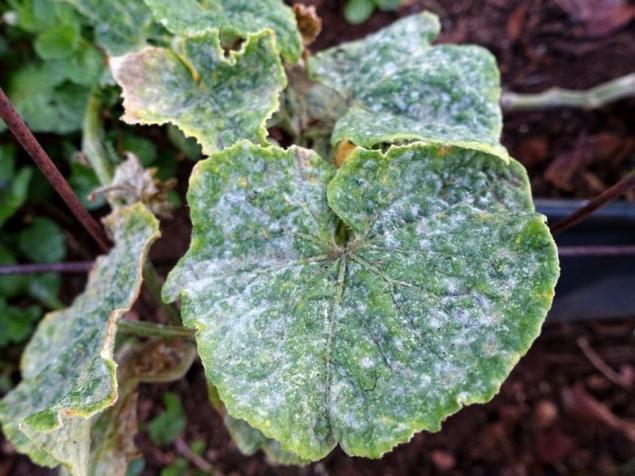
Against floury dew A solution of 1 ml of iodine and 1 liter of skim milk or whey per 9 liters of water helps perfectly (one can add 1 tbsp of liquid soap to the solution). Spraying can be repeated every two weeks until the disease completely disappears.
“Side” effect of such treatments with iodine solution can be increased fruiting, so that even without floury dew it will not be superfluous to spray cucumbers and zucchini with the above solution.
Iodine against pests such as weevil and larvae They are afraid of treatment with iodine solution. To combat the larvae of the May beetle, prepare such a solution: 20 ml of iodine per 10 liters of water. Water 1 liter under each bush.
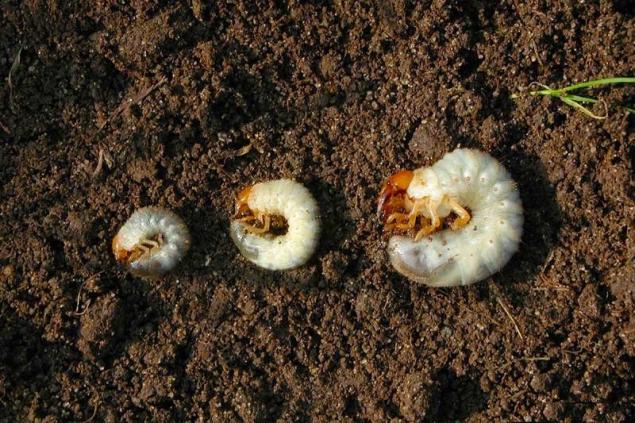
If the larvae harm young currant shrubs, water with the same solution of 5 liters under the bush 2 times a season in spring and autumn.
If you see that the plant dies, fades, pour it 3 times with an interval of 5 days with an iodine solution: 20 ml per 10 liters of water. Water in the evening, trying not to get on the leaves.
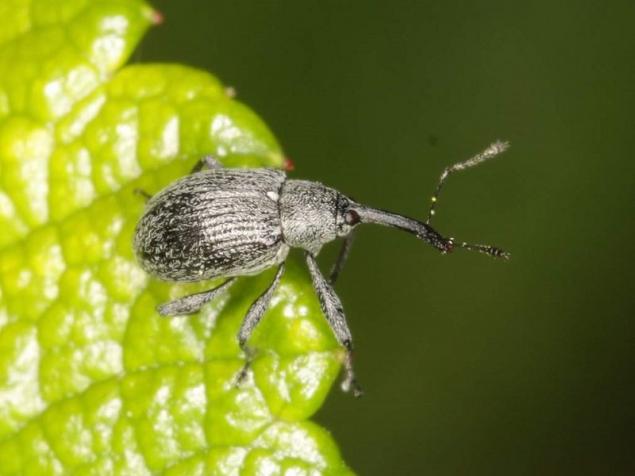
Prevention against the appearance of weevil - treatment of the strawberry site in early spring (when the soil is still covered with snow) with a solution of 1 tsp of iodine per 10 liters of water.
Iodine as a feeding and fertilizer for plants Iodine is successfully used for plants not only as an antiseptic and bactericidal agent, but also as an additional universal feeding. Such feedings gratefully respond to cabbage, cucumbers, tomatoes, pepper, garden strawberries.

For fertilizing tomatoes, cucumbers and pepper with iodine (both in the greenhouse and in the open ground), use a solution of 40 drops of the drug per 10 liters of water. 0.5 l of this solution is applied to each plant after the appearance of the first flowers. Repeat iodine feeding no earlier than after 3-4 weeks.
The same solution at the rate of 1 liter for each plant water the cabbage during the very beginning of the formation of the heads (fertilize after abundant watering).
Is it possible to use iodine not only for vegetables and greens, but also for houseplants? Of course, especially rejoice in such feeding weakened plants and those that lack the strength to flower. Watering flowers with iodine is carried out only on moist soil and preferably along the wall of the pot, so as not to burn the roots of the plant.
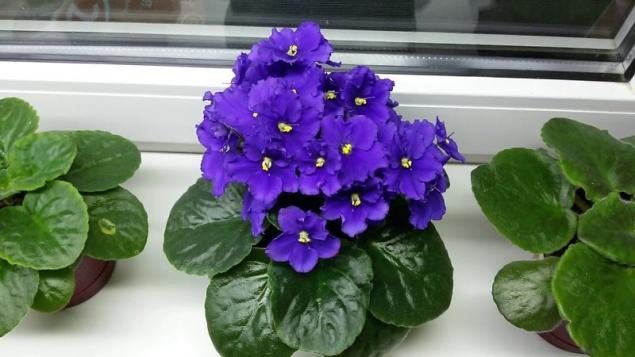
As you can see, in reasonable dosages, iodine is useful not only for humans, but also for indoor and garden plants. This medical product has proven itself as a fertilizer and therapeutic agent. It is only important not to exceed the dosage and follow the rules of its use.
Iodine is not the only medicine in your medicine cabinet that plants can use. Earlier we have already written how penny succinic acid can transform beyond recognition favorite vases.
Learn also about not quite ordinary, but effective way of feeding seedlings of peppers and tomatoes. Field seedlings with this simple means - strong shoots, lush flowering, a rich harvest are guaranteed!

"Site" will tell you about the benefits of iodine for plants and the most popular folk methods of its use in the country.
Iodine for plants plays an important role in the life of plants, the normal course of their physiological processes. It takes part in the synthesis of individual amino acids and proteins (part of their composition), is a natural antiseptic, participates in breathing, photosynthesis and nitrogen metabolism.

DepositPhotos
This trace element is active against most fungi, viruses and bacteria - especially effective in the fight against phytofluorosis, various rots and powdery dew. And iodine is necessary for plants for normal development, budding and tying of fruits.
Lack of iodine in plants can lead to a decrease in their resistance to various diseases. The cause of iodine deficiency can be an insufficient content of this element in the soil (especially peat and podzolic soils, light supses, as well as substrates with a deficiency of organic matter).
Unfavorable for iodine too acidic soils - in them iodine instantly goes to the lower layers, becoming inaccessible to plants. Most natural iodine in chernozem fertile soils, in lowlands and especially in coastal areas.

DepositPhotos
Visually determine the lack of this trace element in plants is quite difficult, since the signs of its lack are quite conditional, and some coincide with signs of various diseases, pests, freezing plants.
Therefore, we recommend doing at least preventive feeding of plants with iodine - at least it will be useful in any suburban area and certainly will not harm plants.
Watering seedlings with iodine helps it rise faster and friendlier, and also accelerates growth. In the early stages of development, the use of this trace element is the key to the formation of high resistance to adverse environmental factors and various diseases.

DepositPhotos Feeding with iodine solution is shown for seedlings of tomatoes, peppers, cucumbers, eggplant, cabbage. To create a working solution, dilute 1 drop of iodine in 3 liters of water. Thoroughly mix and water the seedlings under the root. To enrich seedlings with iodine, such a single watering will be enough.
Alcoholic iodine solution even in such a low concentration is able to burn a plant, especially young. Therefore, with all manipulations with iodine preparations, carefully monitor that the solution does not fall on the stems and leaves. If this is spraying, carefully follow the dosage.
Iodine against phytophthorosis A dangerous disease of nightshade cultures is phytophthorosis. The fungus that causes the disease gets onto plants from soil, weeds and tools for processing.

Tomatoes and potatoes are especially common in cool, damp weather. Do not save from phytophthora and shelter for plants. Not only are the leaves of the nightshade affected, but also the fruits and root vegetables.
The first sign of the manifestation of phytophthora on tomatoes are brown spots on the leaves of plants on the reverse side. Gradually, the leaf plate can yellow and dry under the influence of the pathogen. To protect tomatoes from phytophthora, you can use an iodine solution.

DepositPhotos
About three weeks after the appearance of shoots, gently spray young plants with a solution of 15 drops of iodine, 10 liters of water and 1 liter of skim milk. This treatment can be repeated another 2-3 times with an interval between spraying at least two weeks.
Iodine against powdery dew Munchy dew is the scourge of summer residents. Most often it affects currants, gooseberry, barberry. Cucumbers, tomatoes, tomatoes and pumpkin torment. Attacks delicate roses, floxes, peonies, chrysanthemums.

Against floury dew A solution of 1 ml of iodine and 1 liter of skim milk or whey per 9 liters of water helps perfectly (one can add 1 tbsp of liquid soap to the solution). Spraying can be repeated every two weeks until the disease completely disappears.
“Side” effect of such treatments with iodine solution can be increased fruiting, so that even without floury dew it will not be superfluous to spray cucumbers and zucchini with the above solution.
Iodine against pests such as weevil and larvae They are afraid of treatment with iodine solution. To combat the larvae of the May beetle, prepare such a solution: 20 ml of iodine per 10 liters of water. Water 1 liter under each bush.

If the larvae harm young currant shrubs, water with the same solution of 5 liters under the bush 2 times a season in spring and autumn.
If you see that the plant dies, fades, pour it 3 times with an interval of 5 days with an iodine solution: 20 ml per 10 liters of water. Water in the evening, trying not to get on the leaves.

Prevention against the appearance of weevil - treatment of the strawberry site in early spring (when the soil is still covered with snow) with a solution of 1 tsp of iodine per 10 liters of water.
Iodine as a feeding and fertilizer for plants Iodine is successfully used for plants not only as an antiseptic and bactericidal agent, but also as an additional universal feeding. Such feedings gratefully respond to cabbage, cucumbers, tomatoes, pepper, garden strawberries.

For fertilizing tomatoes, cucumbers and pepper with iodine (both in the greenhouse and in the open ground), use a solution of 40 drops of the drug per 10 liters of water. 0.5 l of this solution is applied to each plant after the appearance of the first flowers. Repeat iodine feeding no earlier than after 3-4 weeks.
The same solution at the rate of 1 liter for each plant water the cabbage during the very beginning of the formation of the heads (fertilize after abundant watering).
Is it possible to use iodine not only for vegetables and greens, but also for houseplants? Of course, especially rejoice in such feeding weakened plants and those that lack the strength to flower. Watering flowers with iodine is carried out only on moist soil and preferably along the wall of the pot, so as not to burn the roots of the plant.

As you can see, in reasonable dosages, iodine is useful not only for humans, but also for indoor and garden plants. This medical product has proven itself as a fertilizer and therapeutic agent. It is only important not to exceed the dosage and follow the rules of its use.
Iodine is not the only medicine in your medicine cabinet that plants can use. Earlier we have already written how penny succinic acid can transform beyond recognition favorite vases.
Learn also about not quite ordinary, but effective way of feeding seedlings of peppers and tomatoes. Field seedlings with this simple means - strong shoots, lush flowering, a rich harvest are guaranteed!
Drozhennikov: "To get rid of joint pain, every morning I rub the usual ..."
What stylish things can be thrown away
